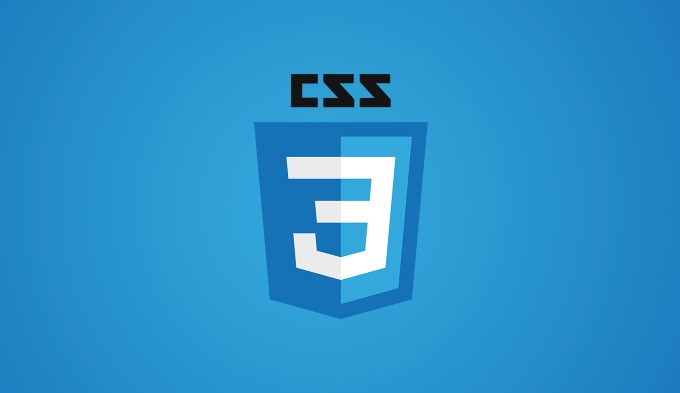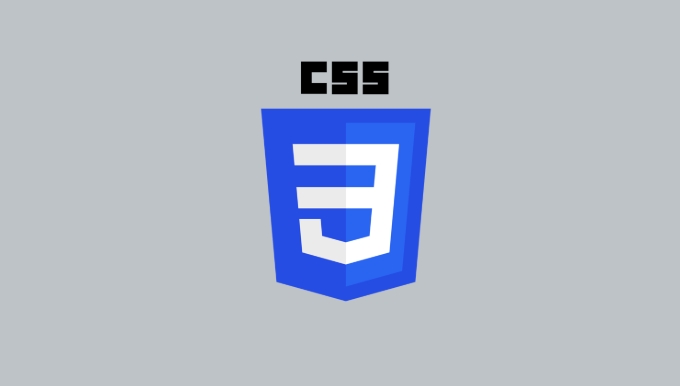CSS's calc() function allows mathematical operations to be performed directly in style sheets. Its basic syntax includes four operations: addition, subtraction, multiplication and division, and requires spaces to be added when using the sum- operator. The main uses include: 1. Adjust the width without changing the box model (such as deducting the inner margin); 2. Dynamically position elements (such as centering based on percentages and fine-tuning the position); 3. Mix different units for calculations (such as combining viewport units and pixels). Additionally, calc() supports nested use, but overcomplexity should be avoided to maintain readability. Browser compatibility is good and there is no need to add prefixes, but potential issues need to be paid attention to when dealing with older browsers (such as IE11). It is recommended to add comments to complex expressions and perform multi-browser testing when using them.

Using calc() in CSS is a handy way to do math right inside your stylesheets. It's especially useful when you need to mix different units or calculate widths, heights, margins, and more on the fly. Let me break down how it works and when you might want to use it.

Basic Syntax of calc()
The calc() function lets you perform basic math operations — addition, subtraction, multiplication, and division — directly in your CSS values. The syntax looks like this:

width: calc(100% - 20px);
One thing to remember: always put spaces around the and - operators. Otherwise, it won't work. So this is correct:
calc(100% - 20px)
But this won't work:

calc(100%-20px)
You can use any valid CSS value inside calc() — pixels, percentages, ems, rems, viewport units, etc. That flexibility makes it super useful for responsive layouts.
Common Use Cases for calc()
There are a few situations where calc() really shines:
Adjusting width with padding or borders
If you want an element to be 100% wide but also have padding, usingbox-sizing: border-boxusually handles that. But if you can't change the box model,calc()is a good alternative:.box { width: calc(100% - 20px); /* subtract left and right padding */ padding: 0 10px; }Positioning elements dynamically
You might want to center something but adjust based on another value. For example:.tooltip { left: calc(50% - 100px); }Mixing units
This is one of the most powerful uses. Say you want font size to scale with viewport width but add a little extra:font-size: calc(1vw 10px);
These examples show how calc() helps avoid JavaScript or extra wrapper elements just to handle layout math.
Nesting calc() Functions
Yes, you can even nest calc() functions inside each other. It's not something you'll use every day, but it can come in handy when dealing with complex calculations.
Here's a contributed example:
width: calc( (100% / 3) - calc(30px 1em) );
In practice, nesting gets hard to read fast, so keep it simple unless you really need it. Also, modern preprocessors like Sass or Less might make nested math easier to manage before it hits the browser.
Browser Support and Tips
Browser support for calc() is solid these days — all major browsers support it without issues. No need to worry about prefixes anymore.
A couple quick tips:
- Don't forget the spaces around
-. - Use comments inside complex
calc()expressions if needed, though CSS doesn't allow inline comments inside them. - Test in multiple browsers if targeting older versions (like IE11), where some quirks exist.
If you're building responsive sites or doing anything dynamic with spacing or sizing, calc() is a great tool to keep in your CSS toolkit.
That's the basics of using calc() in CSS. Not too complicated once you get used to the syntax, but incredibly useful in real-world layouts.
The above is the detailed content of How to use the CSS calc() function tutorial. For more information, please follow other related articles on the PHP Chinese website!

Hot AI Tools

Undress AI Tool
Undress images for free

Undresser.AI Undress
AI-powered app for creating realistic nude photos

AI Clothes Remover
Online AI tool for removing clothes from photos.

Clothoff.io
AI clothes remover

Video Face Swap
Swap faces in any video effortlessly with our completely free AI face swap tool!

Hot Article

Hot Tools

Notepad++7.3.1
Easy-to-use and free code editor

SublimeText3 Chinese version
Chinese version, very easy to use

Zend Studio 13.0.1
Powerful PHP integrated development environment

Dreamweaver CS6
Visual web development tools

SublimeText3 Mac version
God-level code editing software (SublimeText3)

Hot Topics
 How can I include CSS only on some pages?
Jun 11, 2025 am 12:01 AM
How can I include CSS only on some pages?
Jun 11, 2025 am 12:01 AM
There are three ways to selectively include CSS on a specific page: 1. Inline CSS, suitable for pages that are not frequently accessed or require unique styles; 2. Load external CSS files using JavaScript conditions, suitable for situations where flexibility is required; 3. Containment on the server side, suitable for scenarios using server-side languages. This approach can optimize website performance and maintainability, but requires balance of modularity and performance.
 Flexbox vs Grid: Understanding the Key Differences in CSS Layout
Jun 10, 2025 am 12:03 AM
Flexbox vs Grid: Understanding the Key Differences in CSS Layout
Jun 10, 2025 am 12:03 AM
Flexboxisidealforone-dimensionallayouts,whileGridsuitstwo-dimensional,complexlayouts.UseFlexboxforaligningitemsinasingleaxisandGridforprecisecontroloverrowsandcolumnsinintricatedesigns.
 Creating an Auto-Closing Notification With an HTML Popover
Jun 10, 2025 am 09:45 AM
Creating an Auto-Closing Notification With an HTML Popover
Jun 10, 2025 am 09:45 AM
The HTML popover attribute transforms elements into top-layer elements that can be opened and closed with a button or JavaScript. Popovers can be dismissed a number of ways, but there is no option to auto-close them. Preethi has a technique you can u
 What is 'render-blocking CSS'?
Jun 24, 2025 am 12:42 AM
What is 'render-blocking CSS'?
Jun 24, 2025 am 12:42 AM
CSS blocks page rendering because browsers view inline and external CSS as key resources by default, especially with imported stylesheets, header large amounts of inline CSS, and unoptimized media query styles. 1. Extract critical CSS and embed it into HTML; 2. Delay loading non-critical CSS through JavaScript; 3. Use media attributes to optimize loading such as print styles; 4. Compress and merge CSS to reduce requests. It is recommended to use tools to extract key CSS, combine rel="preload" asynchronous loading, and use media delayed loading reasonably to avoid excessive splitting and complex script control.
 How to use Lotties in Figma
Jun 14, 2025 am 10:17 AM
How to use Lotties in Figma
Jun 14, 2025 am 10:17 AM
In the following tutorial, I will show you how to create Lottie animations in Figma. We'll use two colorful designs to exmplify how you can animate in Figma, and then I'll show you how to go from Figma to Lottie animations. All you need is a free Fig
 Breaking Boundaries: Building a Tangram Puzzle With (S)CSS
Jun 13, 2025 am 11:33 AM
Breaking Boundaries: Building a Tangram Puzzle With (S)CSS
Jun 13, 2025 am 11:33 AM
We put it to the test and it turns out Sass can replace JavaScript, at least when it comes to low-level logic and puzzle behavior. With nothing but maps, mixins, functions, and a whole lot of math, we managed to bring our Tangram puzzle to life, no J
 External vs. Internal CSS: What's the Best Approach?
Jun 20, 2025 am 12:45 AM
External vs. Internal CSS: What's the Best Approach?
Jun 20, 2025 am 12:45 AM
ThebestapproachforCSSdependsontheproject'sspecificneeds.Forlargerprojects,externalCSSisbetterduetomaintainabilityandreusability;forsmallerprojectsorsingle-pageapplications,internalCSSmightbemoresuitable.It'scrucialtobalanceprojectsize,performanceneed
 Does my CSS must be on lower case?
Jun 19, 2025 am 12:29 AM
Does my CSS must be on lower case?
Jun 19, 2025 am 12:29 AM
No,CSSdoesnothavetobeinlowercase.However,usinglowercaseisrecommendedfor:1)Consistencyandreadability,2)Avoidingerrorsinrelatedtechnologies,3)Potentialperformancebenefits,and4)Improvedcollaborationwithinteams.






